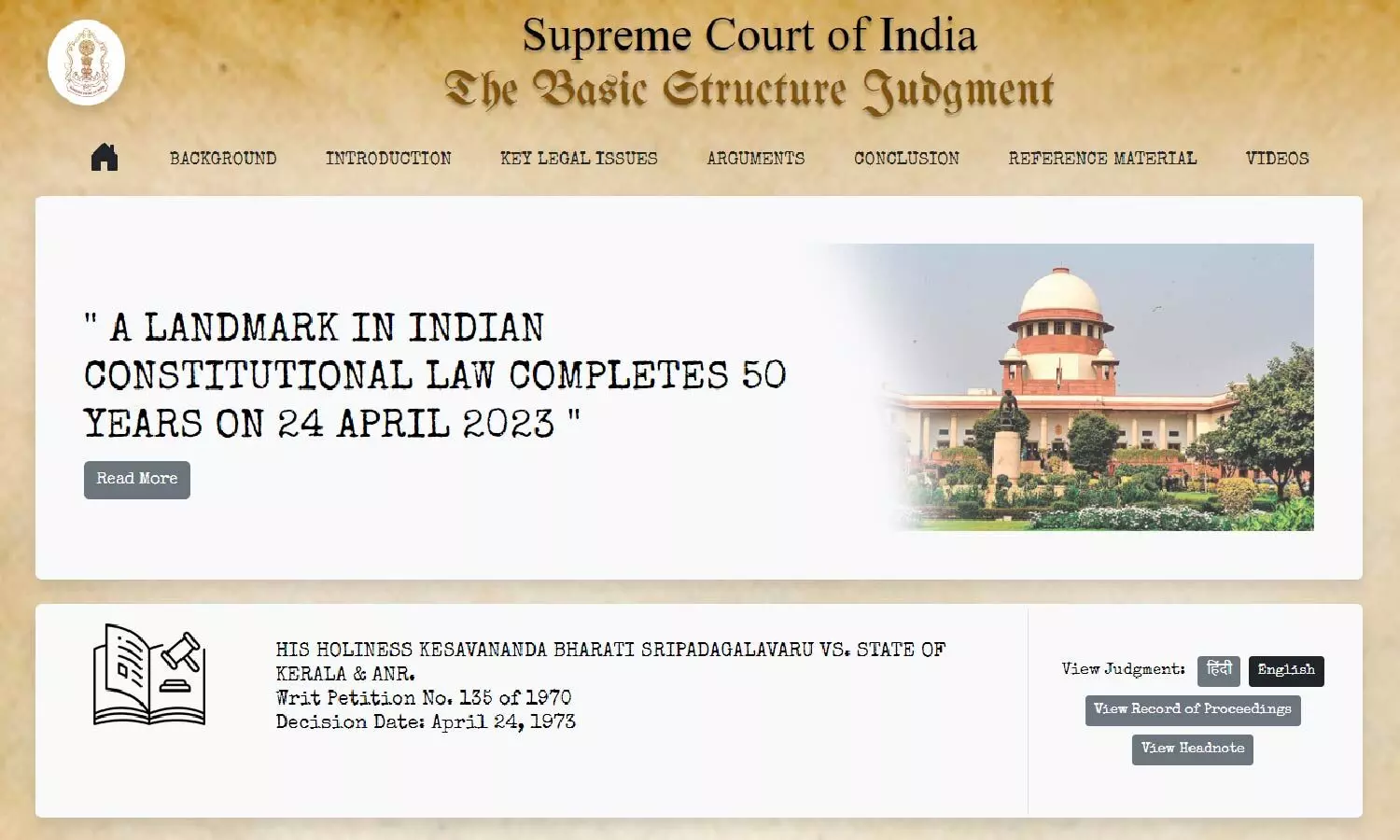
50 Years Of Kesavananda Bharati Verdict| Judgment Made Available In 10 Indian Languages On Supreme Court Website: CJI DY Chandrachud
 |
|The historic Kesavananda Bharati verdict that laid down the "basic structure doctrine" of the Constitution is now available in 10 Indian languages on the Supreme Court website at a time when the nation is commemorating 50 years of the judgement, Chief Justice D Y Chandrachud said today.
The acclaimed 1973 judgment on the "basic structure" doctrine clipped the widest power of Parliament to amend the Constitution and simultaneously gave the judiciary the authority to review any amendment on grounds of its violation.
"Year 2023 commemorates 50 years of judgment in the Keshavananda Bharti case. We had made a web-page for the judgement...To reach out to a wider section of society I thought we could translate it into Indian languages because language barriers prevent people from really understanding the work of the court," the CJI said before commencing hearing on pleas to examine constitutional validity of section 6A of the Citizenship Act relating to illegal immigrants in Assam.
The CJI said now the judgement is available in Hindi, Telugu, Tamil, Odia, Malyalam, Gujarati, Kannada, Bengali, Assamese, and Marathi.
"This is similar to our efforts to translate our judgments in Indian languages," he said, adding that 20,000 apex court judgments have been translated in Indian languages and uploaded on e-SCR (electronic version of Supreme Court reports).
Lawyers and district courts, where work is predominantly carried out in Hindi, can cite and refer the SC judgments in Hindi, the CJI said, adding now the translation is being carried out in all scheduled Indian languages.
Hailing the move, Solicitor General Tushar Mehta said, "People otherwise used to know about the Keshavananda Bharti judgement without knowing that there was a big case."
The CJI said law students, who are not in "highly-resourced colleges", cannot even access SC judgments. "Now a student who wants to read a judgment in e-SCR in Hindi can do so," he said, adding no other country has attempted or done so.
The CJI said the chief justices of high courts have recently told him about their willingness to ensure translation of judgments in regional languages under their jurisdictions.
On the 50th anniversary, the apex court on April 24 this year decided to dedicate to people, including researchers, a web page containing details of the arguments, written submissions and judgment in the historic case.
In the path-breaking verdict by a 13-judge bench, the apex court, by a 7:6 majority, had laid down the concept of "basic structure" of the Constitution and consequently, restricted the amending power of Parliament, holding that it cannot touch upon the Constitution's basic structure.
The sharply-divided verdict, which later found many supporters in eminent jurists, had held that though Parliament had the power to amend the Constitution under Article 368, it did not have the power to "emasculate" its basic features.
The milestone judgment interpreted the notion that every bit of the Constitution is amendable by Parliament. It rather propounded the concept of the basic structure and said aspects such as democracy, judicial independence, separation of power and secularism are part of the basic structure of the Constitution and hence, those cannot be amended by Parliament.